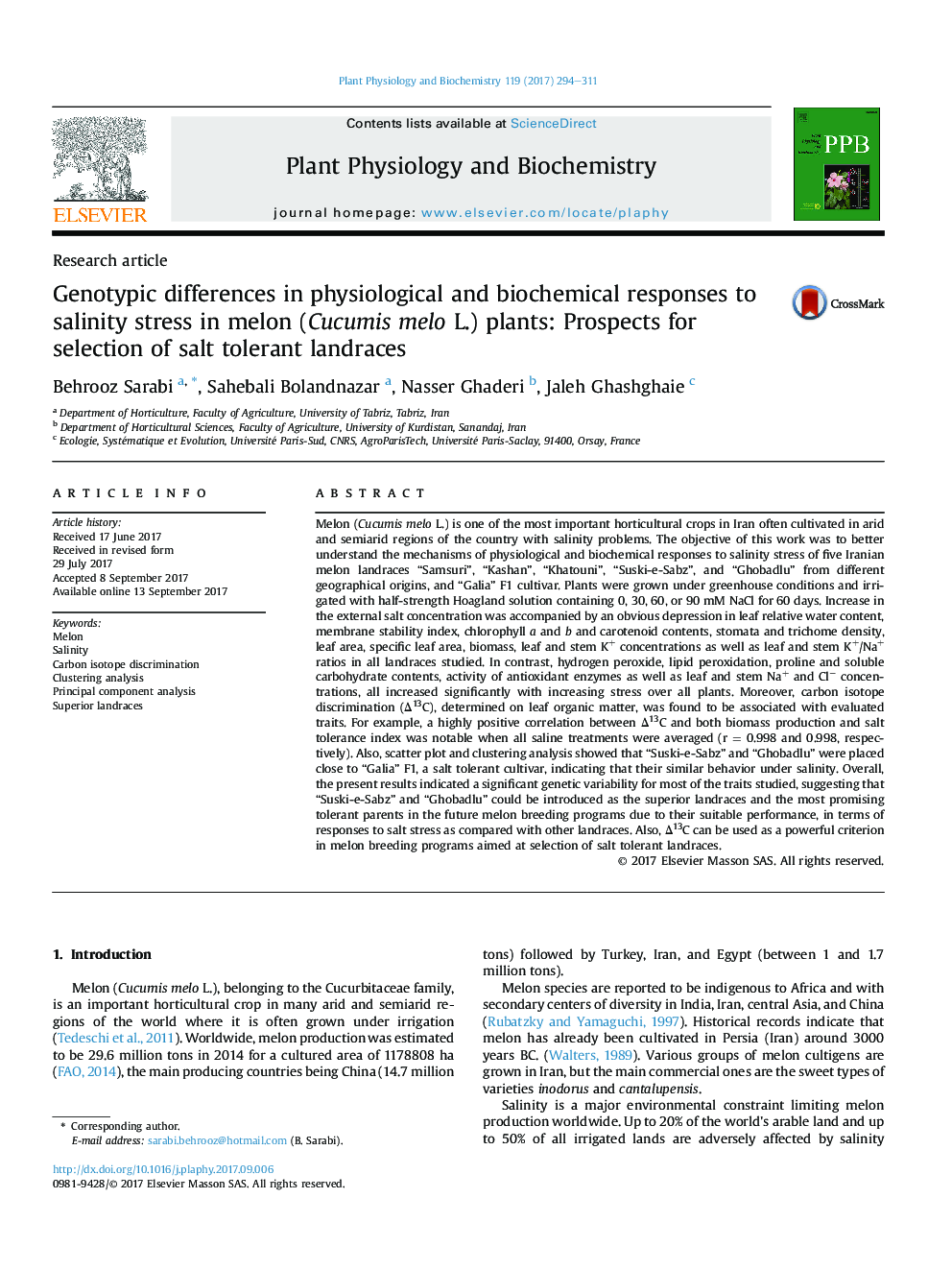| کد مقاله | کد نشریه | سال انتشار | مقاله انگلیسی | نسخه تمام متن |
|---|---|---|---|---|
| 5515313 | 1541902 | 2017 | 18 صفحه PDF | دانلود رایگان |

- Melon is an important horticultural crop which is often cultivated in arid and semiarid regions with salinity problems.
- Current study provided a broad analysis of the impact of a 60-day NaCl stress on the physiological and biochemical traits.
- An increase in the external salt concentrations was accompanied by the significant changes for most of the traits studied.
- The Suski-e-Sabz and Ghobadlu could be introduced as the most promising tolerant parents in future melon breeding programs.
- CID (Î13C) could be used as an important proxy component for selection of melon landraces with tolerance to salinity.
Melon (Cucumis melo L.) is one of the most important horticultural crops in Iran often cultivated in arid and semiarid regions of the country with salinity problems. The objective of this work was to better understand the mechanisms of physiological and biochemical responses to salinity stress of five Iranian melon landraces “Samsuri”, “Kashan”, “Khatouni”, “Suski-e-Sabz”, and “Ghobadlu” from different geographical origins, and “Galia” F1 cultivar. Plants were grown under greenhouse conditions and irrigated with half-strength Hoagland solution containing 0, 30, 60, or 90 mM NaCl for 60 days. Increase in the external salt concentration was accompanied by an obvious depression in leaf relative water content, membrane stability index, chlorophyll a and b and carotenoid contents, stomata and trichome density, leaf area, specific leaf area, biomass, leaf and stem K+ concentrations as well as leaf and stem K+/Na+ ratios in all landraces studied. In contrast, hydrogen peroxide, lipid peroxidation, proline and soluble carbohydrate contents, activity of antioxidant enzymes as well as leaf and stem Na+ and Clâ concentrations, all increased significantly with increasing stress over all plants. Moreover, carbon isotope discrimination (Î13C), determined on leaf organic matter, was found to be associated with evaluated traits. For example, a highly positive correlation between Î13C and both biomass production and salt tolerance index was notable when all saline treatments were averaged (r = 0.998 and 0.998, respectively). Also, scatter plot and clustering analysis showed that “Suski-e-Sabz” and “Ghobadlu” were placed close to “Galia” F1, a salt tolerant cultivar, indicating that their similar behavior under salinity. Overall, the present results indicated a significant genetic variability for most of the traits studied, suggesting that “Suski-e-Sabz” and “Ghobadlu” could be introduced as the superior landraces and the most promising tolerant parents in the future melon breeding programs due to their suitable performance, in terms of responses to salt stress as compared with other landraces. Also, Î13C can be used as a powerful criterion in melon breeding programs aimed at selection of salt tolerant landraces.
Journal: Plant Physiology and Biochemistry - Volume 119, October 2017, Pages 294-311